- About Archives
- About SAA
- Careers
- Education
- Publications
- Advocacy
- Membership
Samantha Bradbeer, Archivist and Historian, Hallmark Cards, Inc.
Samantha Bradbeer spends her days at Hallmark making sure that an accurate and varied record of company, family, and product history is preserved for future generations.
As the company archivist and historian, Bradbeer oversees the preservation of advertisements, audio visual materials, chromolithographs, company records, greeting cards and other products, original artwork, postcards, progressive proof books, rare books, prints and folios, scrapbooks, salesman’s sample books, trade cards, and writing manuals.
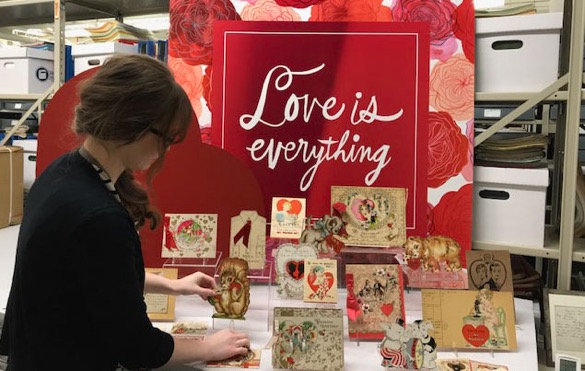
Bradbeer prepares a Valentine's Day display for the nearby Hallmark Visitors Center. Hallmark has created millions of products since 1910, and the Hallmark Archives has stored and preserved a sampling from every year and holiday or occasion (Courtesy of Hallmark Cards, Inc.)
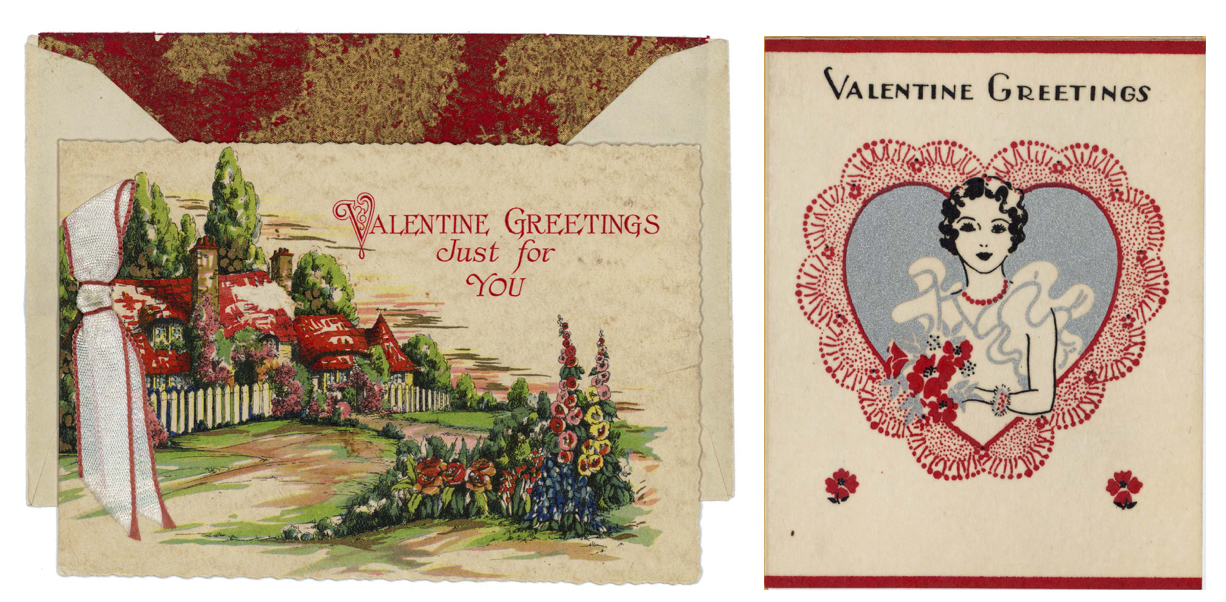
In the late 1920s, Hallmark’s product line included 300 card designs for Valentine’s Day. The company now offers more than 1,500 Valentine's Day cards to meet a variety of diverse relationship needs (Courtesy of Hallmark Cards, Inc.).
The historical collection, one of the oldest collections housed in the Hallmark Archives, and the product collection document the early greeting card industry and reflects the social, economic, and political times in which the items were created.
“Greeting cards are artifacts of popular culture, and, as such, they reveal graphic design, literary, and social trends. They provide both visual pleasure and important historical information,” Bradbeer said.
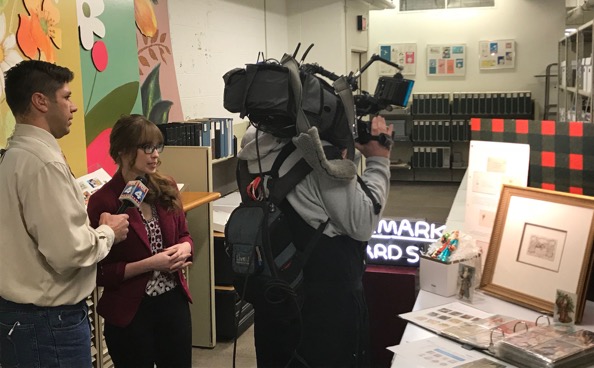
Bradbeer shares the history behind the world’s first printed Christmas card with FOX 4 Morning reporter Matt Stewart. The Hallmark Archives holds two copies of this rare card, which was commissioned by Sir Henry Cole in 1843 (Courtesy of Hallmark Cards, Inc.).
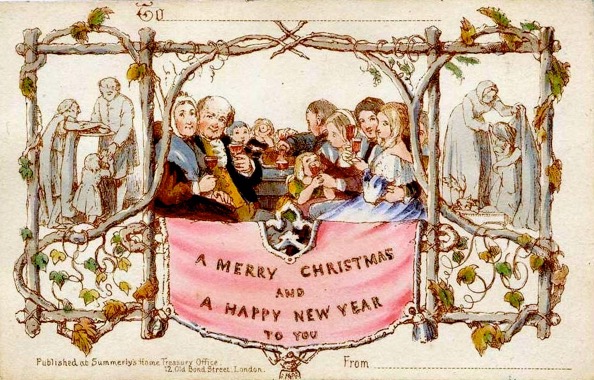
John Calcott Horsley, member of the British Royal Academy and friend of Cole, designed the card in 1843. It was printed by Jobbins of Warwick Court, Holbrun, London, and was hand colored by a professional artist named Mason. Of the 1,000 copies originally printed, only 12 are known to exist today (Courtesy of Hallmark Cards, Inc.).
Aside from cataloging and storing materials in the Hallmark Archives, Bradbeer also provides in-person and digital access to employees and business partners for inspiration, product development, and research. She answers written research requests from collectors, researchers, and writers, as time allows, and increases the visibility of the private company’s history through exhibitions, social media posts, and interviews with national media outlets.
“I love to share Hallmark’s history as often as I can, and I am always looking for new ways to do so. Over the past two years, I have had the privilege of speaking with thousands of collectors at national conventions and hundreds of fans at Hallmark Live,” said Bradbeer.
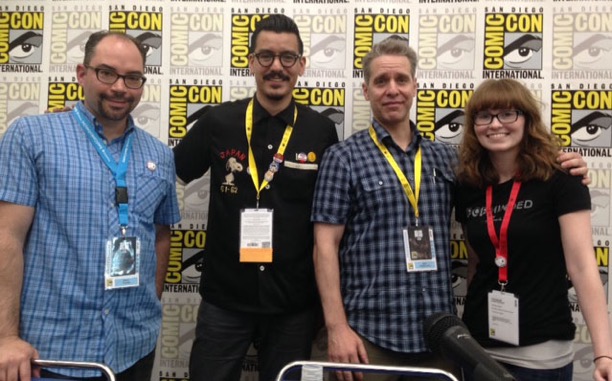
Lex Farajado, senior editor - Creative Associates; Cesar Gallegos, archivist - Charles M. Schulz Museum; Nick Galifianakis – cartoonist; and Bradbeer present a panel to nearly 500 Peanuts fans at San Diego Comic Con (Courtesy of Hallmark Cards, Inc.).
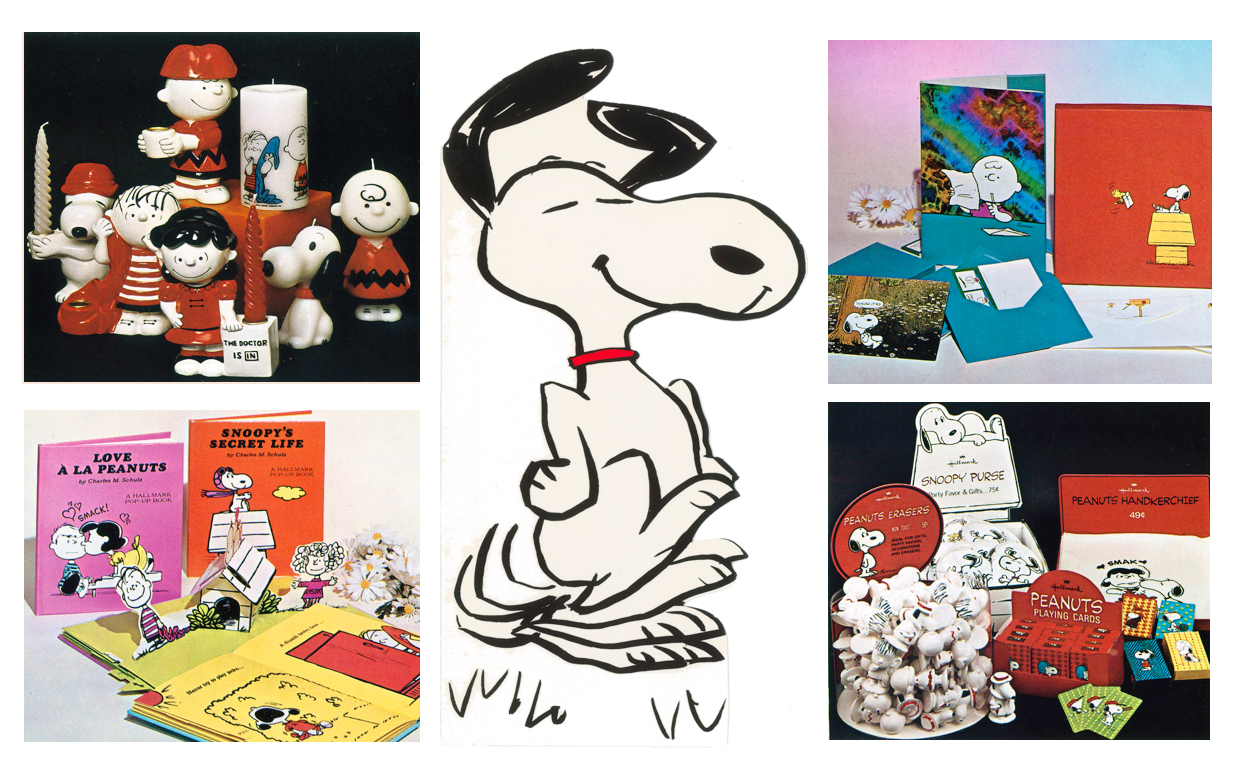
Charles Schulz's Peanuts® characters first appeared on Hallmark cards in 1960. During the 58-year relationship, Hallmark and Peanuts have collaborated to produce more than 150 billion pieces of product featuring popular characters such as Charlie Brown, Linus, Lucy, and Snoopy (Courtesy of Hallmark Cards, Inc. © Peanuts Worldwide LLC.)
Over the past 60 years, collections stored within the Hallmark Archives have also profoundly influenced a wide range of Hallmark products, including e-cards, greeting cards, home décor, Keepsake Ornaments, and puzzles. Designs from the past have been so popular that Hallmark introduced Time Machine e-cards in 2015 and launched the Heritage Collection in 2016, both of which continue to expand in the marketplace.
“Hallmark founder J.C. Hall began assembling the collections in the 1950s for two significant reasons, and since then we have continued to honor his original intention,” said Bradbeer. “He knew then, just as we know today, that a vast repository could be a source of reminiscence and education, and an inspiration for contemporary nostalgic products developed by Hallmark artists.”
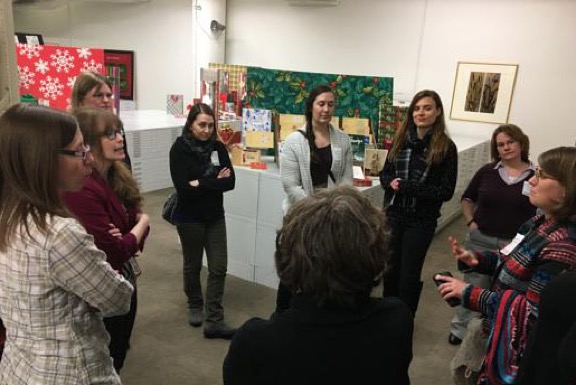
Bradbeer provides approximately 40 tours of the Hallmark Archives per year to employees, business partners, and special guests. Each tour provides an overview of Hallmark’s 108-year history, and how the collections can be used for inspiration, product development, and research (Courtesy of the Kansas City Area Archivists).
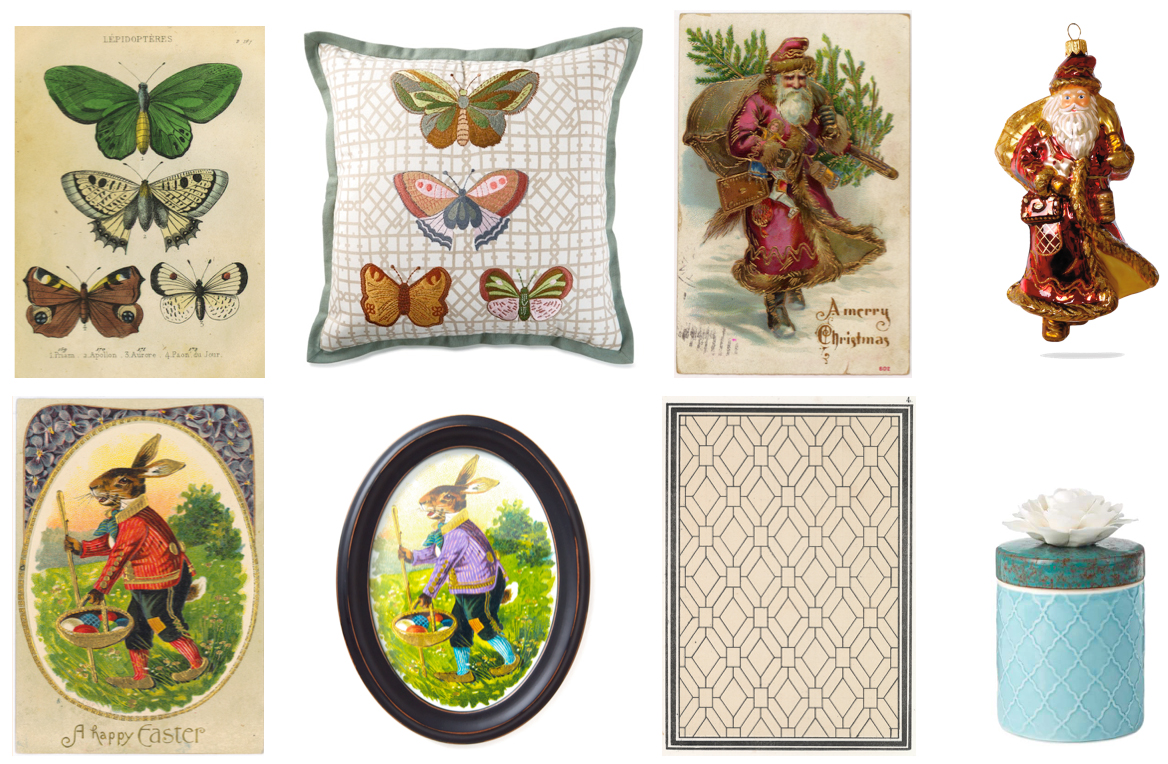
Hallmark’s Heritage Collection is inspired by Hallmark’s long, rich heritage and passion for connecting, creativity, and craftsmanship. The collection features high-quality, finely crafted ornaments and holiday décor, as well as greeting cards and gift wrap, all inspired by imagery of the past (Courtesy of Hallmark Cards, Inc.).
If you are interested in learning more about Hallmark’s history, Bradbeer recommends reading Hallmark: A Century of Caring by Patrick Regan (2009) and When You Care Enough by Joyce C. Hall (1979, 1992), viewing current exhibits at the Hallmark Visitors Center, and following Hallmark’s social media channels for history-based content, including 40 Years of Magical Collaboration with Disney and Gift Wrapping 101.
*Editor’s Note: To hear more from Samantha Bradbeer about her work at Hallmark, check out her interview with SAA COPA (Committee on Public Awareness) member Rachel Seale, Outreach Archivist at Iowa State University, on the ArchivesAWARE! Blog.
I really appreciate this wonderful post that you have provided for us. I assure this would be beneficial for most of the people. expert federal indian law
Mmm.. estimable to be here in your report or notify, whatever, I repute I should moreover process strong for my have website want I play some salubrious further updated busy in your location. UPPERHOUSE
Bikin merchandise pakai printer sublimasi itu ide yang keren banget! Hasilnya bisa macem-macem dan warnanya juga cetar membahana. Beda sama metode cetak lain, sublimasi itu pewarnanya nyatu sama bahan, jadi desainnya nggak bakal pecah, ngelupas, atau pudar seiring waktu.
Makanya, ini cocok banget buat berbagai produk, mulai dari baju custom kayak kaus sama hoodie, sampai barang promosi kayak mug, case HP, dan gantungan kunci. Biaya awalnya juga lumayan terjangkau dibanding teknik cetak lain, jadi bisa buat usaha kecil atau bahkan proyek pribadi. Ditambah lagi, kemampuan cetak warna penuh, desain rumit dengan kualitas foto itu yang bikin dia beda banget.
Mengingat permintaan barang personalisasi yang makin tinggi, investasi di sublimasi buat produksi merchandise kamu itu langkah yang cerdas.
I personally use them exclusively high-quality elements : you will notice these folks during: Lakeland Pest Control
it's really nice and meanful. it's really cool blog. Linking is very useful thing.you have really helped lots of people who visit blog and provide them usefull information. Oviedo Termite Treatment
So it is interesting and very good written and see what they think about other people. Orlando Bed Bug Treatment
I read this article. I think You put a lot of effort to create this article. I appreciate your work. Kissimmee Pest Control
Looking for information re "Charmers" newspapers cartoon in 1970's. Can you please help?